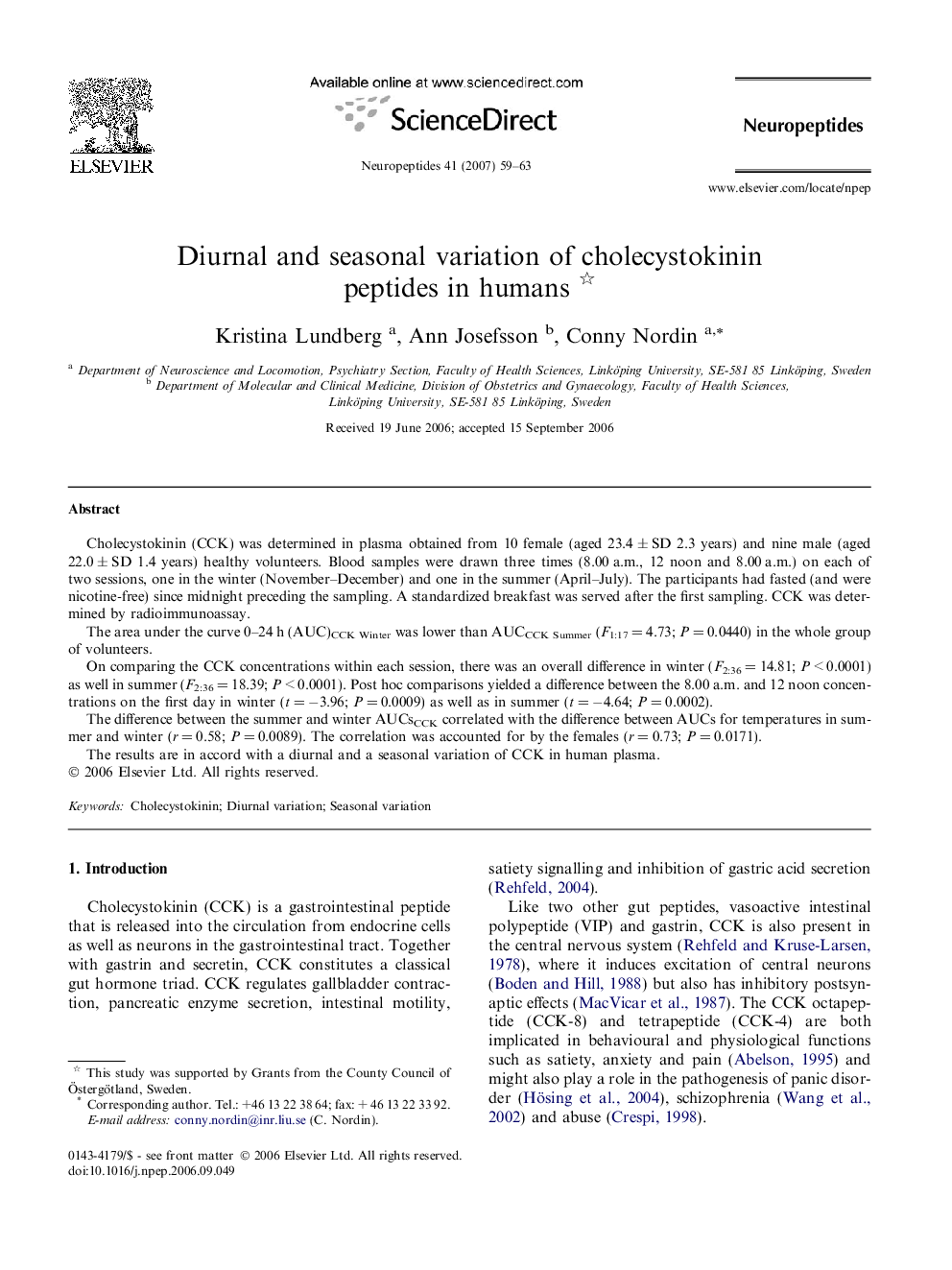| Article ID | Journal | Published Year | Pages | File Type |
|---|---|---|---|---|
| 2808692 | Neuropeptides | 2007 | 5 Pages |
Cholecystokinin (CCK) was determined in plasma obtained from 10 female (aged 23.4 ± SD 2.3 years) and nine male (aged 22.0 ± SD 1.4 years) healthy volunteers. Blood samples were drawn three times (8.00 a.m., 12 noon and 8.00 a.m.) on each of two sessions, one in the winter (November–December) and one in the summer (April–July). The participants had fasted (and were nicotine-free) since midnight preceding the sampling. A standardized breakfast was served after the first sampling. CCK was determined by radioimmunoassay.The area under the curve 0–24 h (AUC)CCK Winter was lower than AUCCCK Summer (F1:17 = 4.73; P = 0.0440) in the whole group of volunteers.On comparing the CCK concentrations within each session, there was an overall difference in winter (F2:36 = 14.81; P < 0.0001) as well in summer (F2:36 = 18.39; P < 0.0001). Post hoc comparisons yielded a difference between the 8.00 a.m. and 12 noon concentrations on the first day in winter (t = −3.96; P = 0.0009) as well as in summer (t = −4.64; P = 0.0002).The difference between the summer and winter AUCsCCK correlated with the difference between AUCs for temperatures in summer and winter (r = 0.58; P = 0.0089). The correlation was accounted for by the females (r = 0.73; P = 0.0171).The results are in accord with a diurnal and a seasonal variation of CCK in human plasma.
